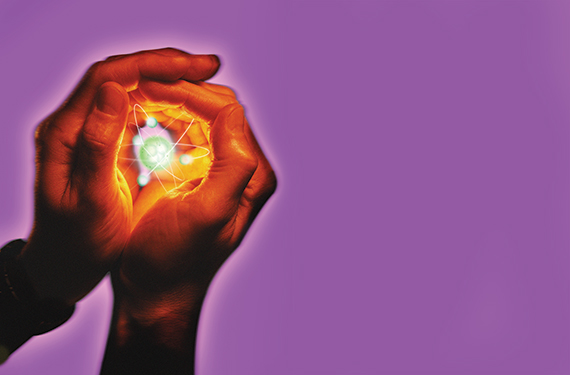When the government pressed pause on Hinkley Point C, the entire industry was left in the dark as to why. But as foreign investors take more of an interest, there’s still plenty of confidence left in the market. Mark Smulian reports
 The catering was booked, the speeches prepared, and the cameras ready. And then suddenly everyone was dressed up with nowhere to go at the launch of the Hinkley Point C nuclear reactor project. For reasons left unexplained, the government called an eleventh-hour “pause”.
The catering was booked, the speeches prepared, and the cameras ready. And then suddenly everyone was dressed up with nowhere to go at the launch of the Hinkley Point C nuclear reactor project. For reasons left unexplained, the government called an eleventh-hour “pause”.
Theories advanced for this surprise ranged from a new government simply wishing to satisfy itself about the project, through to lurid concerns about Chinese nuclear espionage, or a plot by the French and UK governments to extricate each other from Hinkley’s eye-watering cost.
As things turned out, the government’s main concern was to secure influence over who owns the UK’s nuclear infrastructure.
When business secretary Greg Clark eventually gave Hinkley the go-ahead in mid-September, it was with a series of conditions attached about requiring government approval for future changes of ownership in this and other new nuclear power stations.
But does this stop-start approach carry a message about investing in UK infrastructure generally or is a nuclear reactor so untypical that its fate has little bearing on more conventional projects or the UK’s decree of being “open for business”?
Commitment to nuclear
Hinkley will be the centrepiece of efforts by the Heart of the South West Local Enterprise Partnership to position the peninsula as the UK’s nuclear industry centre (see box).
As Jeremy Richards, head of JLL’s Bristol office, said in October 2014: “As well as bringing billions of pounds of investment and hundreds of new jobs, Hinkley Point C will further underline the region’s established reputation for science and engineering.”
Clark’s decision signals a government commitment to nuclear infrastructure despite there being plenty of people seeking to persuade it either to build a different type of reactor, or not to build one at all and invest in renewables instead.
BPF director of finance policy Ian Fletcher thinks Hinkley is a one-off and the complicating factors about Chinese involvement in the UK’s strategic power supply and reactor design should not deter infrastructure investment. “Infrastructure attracts inward investment, creates jobs and ensures that our country remains competitive.”
“It has a symbiotic relationship with real estate and acts as a catalyst for development and regeneration. To attract investment of any kind, it is important for government to provide as much certainty as possible around its infrastructure commitments, which is something that we continually encourage government to do, particularly following the uncertainty after the referendum result.

“Given the unique nature of the Hinkley project, however, investors should not be concerned that it would set a precedent for other government decisions on infrastructure.”
Anthony Shapland, head of development consulting and agency at Colliers International, thinks Hinkley “is too singular to tell us anything about investors’ views of other projects, as the appetite to invest in UK infrastructure is large and we are seeing parts of the world we’ve not seen before now showing interest. “The appetite since June has been quite amazing. It’s partly to do with currency, with the value of the pound falling, but it’s not only that. There is confidence.”
Shapland says Middle East funds that have not looked at infrastructure before are now doing so, and he has recently had two approaches.
He also points to foreign firms such as Skanska and Bouygues, which entered the UK market with contracting businesses and are now using those as the basis for investment in infrastructure projects.
“Bouygues in particular kept investing in town centres after the crash when no one else was and is seeing the benefits now of the capacity it created,” he adds.
Rasheed Hassan, head of cross-border investment at Savills, agrees: “People I talk to are very positive about the UK, despite the referendum. They see any uncertainty as a short-term issue and think the UK generally is in a good state, but changing its relationship with Europe, and they will still be keen as they are taking a long-term view.”
It is this changing relationship with Europe, alongside headlines suggesting trouble could be on the cards, that has meant law firm Trowers & Hamlins has seen a spike in enquiries from unexpected sources.
Chris Plumley, the firm’s partner who leads on regeneration, says: “There has been a lot in the news that deals may be frozen, but we have had unsolicited approaches we hope will translate into foreign investment, in particular in town centres.
“We are seeing the big accountancy firms starting to put projects together and our offices in Dubai and Oman are seeing investors there interested in public sector projects with an infrastructure focus.
“It’s early days but people are looking to explore things. Possibly they think EU investors may drop out and they could replace them.”
Plumley says public-private partnerships remain popular as investment vehicles and local authorities will often seek to use joint ventures to commercialise their assets.
“The public sector has to be very innovative, and it is, but there is plenty of money out there for the right projects, including interest in garden cities, urban extensions and so forth, which can be classed as infrastructure,” he says.
Overseas investors have a range of ways in which to invest either directly in infrastructure or in property development consequent upon it – for example, if a new railway line increases the value of adjacent land. But unlike other more mainstream sectors, infrastructure projects rarely, if ever, involve off-the-shelf investment vehicles.
The only thing that railways, roads, power stations, airports or other infrastructure developments have in common is a certainty that they will be extremely costly and that complex negotiations with the public sector will at some point be needed. It is impossible to generalise about how to invest in them because the risks and rewards will be unique to each.
As Hassan says: “People are buying assets and to do that they will use any vehicle that is open to them and it’s pretty difficult to categorise.”
The BPF’s Fletcher points to investment funds, REITs and joint ventures, and says each will suit a particular type of investor, but thinks the government could do more to attract money here.
He says: “To support real estate and infrastructure investment, the government would do well to further scrutinise its policy agenda to ensure that it is supportive of investment, and consider whether to delay potentially adverse policies, such as the introduction of measures to restrict the tax deductibility of debt.”
Hinkley’s toxic mix of energy security concerns, suspicions of Chinese intentions and disputes over reactor design do not apply to other infrastructure projects, where the technology is understood and the financing less arcane.
Now it is to proceed, the infrastructure sector will be relieved that unpredictable government interventions should not hamper its ability to attract investors with reasonable ease to sound propositions.
Nuclear peninsula
The Heart of the South West Local Enterprise Partnership was as astonished as anyone by the government’s pausing of Hinkley Point C, as it jeopardised ambitious plans to make nuclear one of the peninsula’s main industries.
Chief executive Chris Garcia says the LEP has identified 15 nuclear projects, including Hinkley, with a total value of £50bn, including naval nuclear submarine decommissioning in Plymouth, Devon. “I don’t know exactly what it is – it’s secret,” Garcia admits.
The Huntspill Energy Park, near Burnham-on-Sea, is a newly designated enterprise zone of 222 acres devoted to businesses, clustered around “the idea of the South West becoming the UK’s centre for nuclear power,” he adds.
According to the LEP, there are more than 180 nuclear companies and organisations in the area, employing some 8,000 people, and Horizon Nuclear Power plans to build two or three further reactors at Oldbury, Gloucestershire.
The region’s nuclear industry’s main centres are Bristol, Bridgwater/Taunton and Gloucester/Cheltenham.











